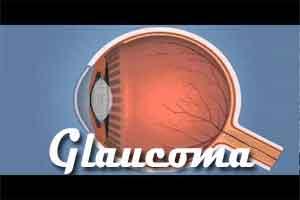- Home
- Editorial
- News
- Practice Guidelines
- Anesthesiology Guidelines
- Cancer Guidelines
- Cardiac Sciences Guidelines
- Critical Care Guidelines
- Dentistry Guidelines
- Dermatology Guidelines
- Diabetes and Endo Guidelines
- Diagnostics Guidelines
- ENT Guidelines
- Featured Practice Guidelines
- Gastroenterology Guidelines
- Geriatrics Guidelines
- Medicine Guidelines
- Nephrology Guidelines
- Neurosciences Guidelines
- Obs and Gynae Guidelines
- Ophthalmology Guidelines
- Orthopaedics Guidelines
- Paediatrics Guidelines
- Psychiatry Guidelines
- Pulmonology Guidelines
- Radiology Guidelines
- Surgery Guidelines
- Urology Guidelines
New glaucoma treatment lasting long with better penetration

Most medications targeting optic neuropathies are administered as eye drops. However, their corneal penetration efficiencies are typically < 5%. There is a clear, unmet need for novel transcorneal drug delivery vehicles. Vikramaditya Yadav a professor of chemical and biological engineering, and biomedical engineering at UBC and his team have developed a hydrogel that when filled with thousands of nanoparticles containing cannabigerolic acid (CBGA), a cannabis compound has shown promise in relieving glaucoma symptoms.Eye drops developed by researchers could one day treat glaucoma while you sleep - helping to heal a condition that is one of the leading causes of blindness around the world.
According to researchers "Medicated eye drops are commonly used to treat glaucoma but they're often poorly absorbed. Less than five per cent of the drug stays in the eye because most of the drops just roll off the eye," "Even when the drug is absorbed, it may fail to reach the back of the eye, where it can start repairing damaged neurons and relieving the pressure that characterizes glaucoma."
The researchers applied the drops on donated pig corneas, which are similar to human corneas, and found that the drug was absorbed quickly and reached the back of the eye.
"You would apply the eye drops just before bedtime, and they would form a lens upon contact with the eye. The nanoparticles slowly dissolve during the night and penetrate the cornea. By morning, the lens will have completely dissolved," said Yadav.
Previous research shows that cannabinoids like CBGA are effective in relieving glaucoma symptoms, but no cannabis-based eye drops have so far been developed because cannabinoids don't easily dissolve in water, according to the researchers.
"By suspending CBGA in a nanoparticle-hydrogel composite, we have developed what we believe is the first cannabinoid-based eye drops that effectively penetrate through the eye to treat glaucoma. This composite could also potentially be used for other drugs designed to treat eye disorders like infections or macular degeneration," said study co-author Syed Haider Kamal, a research associate in Yadav's lab.
Explore further: Scientists engineer drug delivery device that treats glaucoma directly inside the eye
More information: Maryam Kabiri et al, A stimulus-responsive, in situ-forming, nanoparticle-laden hydrogel for ocular drug delivery, Drug Delivery and Translational Research (2018). DOI: 10.1007/s13346-018-0504-x

Disclaimer: This site is primarily intended for healthcare professionals. Any content/information on this website does not replace the advice of medical and/or health professionals and should not be construed as medical/diagnostic advice/endorsement or prescription. Use of this site is subject to our terms of use, privacy policy, advertisement policy. © 2020 Minerva Medical Treatment Pvt Ltd